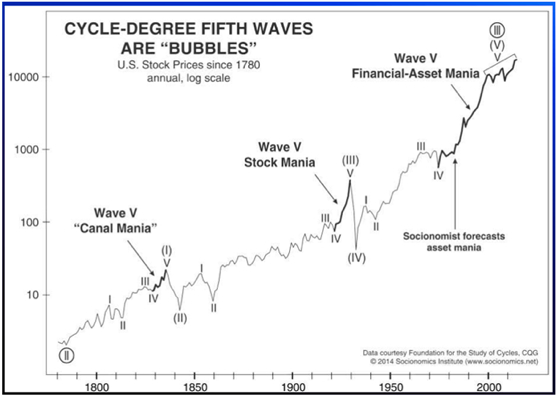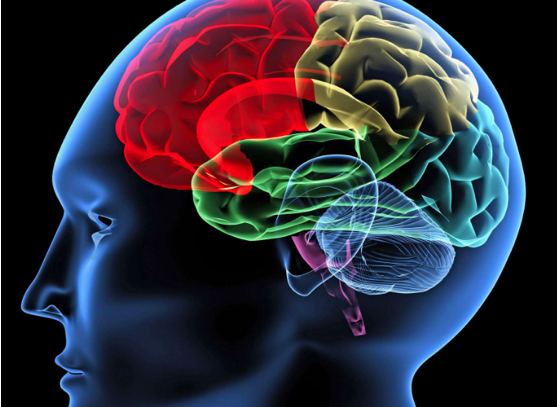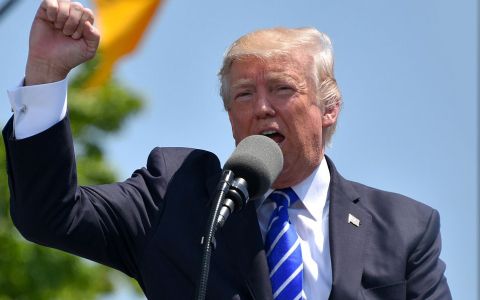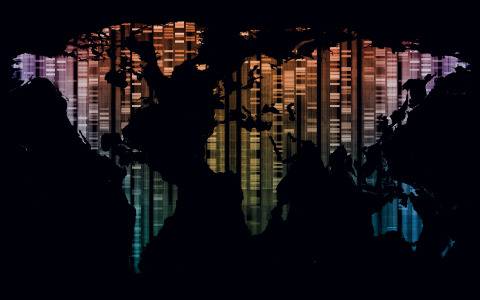1.0 Herding Is Hard-Wired
1.1 The Evolution Of The Human Brain
Our human brains have evolved over millions of years, with the Basal Ganglia coming first and then the limbic or emotional system evolving next. Together they control our nervous systems and our emotions and they are closely linked to others around us, as we are social creatures that have evolved in tribal groups. This includes unconscious feelings and behaviours that are connected to the tribe and its ongoing acceptance of each of us – upon which our very survival depends. These responses are deeply embedded in our very being and take place throughout our day, governing every thought and action we take to some degree.
Then, only a few tens of thousands of years ago, we developed our neocortex or frontal lobes, which are our centre of rational thought, and maximised utility in our existence. It is this third element to our brains that has allowed us to rise above all living creatures on Earth, due to our social organisation and consequent technological innovation. However, the neocortex, however much we like to think otherwise, can be overridden by the lower collective brain functions. Thus, each person is but a node in a much larger human organism linked to others by the hormone surges of neurobiological and entanglement theory.

1.2 Why We Forget
Notably, when collective impulses take control of us, we have no subsequent awareness or memory after the event that a different part of the brain has been in control. This is why we are both individually and collectively unaware of our behaviour patterns unless we use techniques that look objectively at the patterns we create as human civilisations. In summary, this non-rational collective is a product of old, deeply ingrained survival traits that are ill-adapted to decision-making in the modern world.
2.0 Multitudes Of Human Herds

2.1 The Collective Super-Organism Of Humanity
The product of our human hardwiring is that collective human behaviour dominates mankind's actions, making us, in essence, a massive, collective super-organism replete with overriding, multiple sub-collective processes. These are defined by various collective boundaries such as Super Empire, Religion Empire, Nation, Tribe/Clan and Family Unit. These define the boundaries of polarisation and intergroup competition.
- Each group is self-organising, acting as a neural network with each person being a single node in a neural network.
- Each group is defined by a unique set of cultural values compared to other groups.
- Each group is led by those that expound/personify its collective values at the point on its five-stage cycle that offers the best chance of survival and success.
- There are varying degrees of groups, from the largest to the smallest: Super Empire, Religion Empire, Nation, Tribe/Clan and Family Unit.
- Smaller groups can be subsumed into larger groups by common values and purpose, the strongest motivation being a common threat from another group.
- Each group shares common beliefs which act like glue to the system. These ideas are contagious, like a virus, and spread as success grows in a feedback loop creating surges in collective feelings personified by hormones such as dopamine in good times (bull markets) and cortisol in bad times (bear markets).
2.2 The Variability Of Human Organisational Structures
Human collective variance seems to be defined to a large extent by geography, and how the environment shaped the national character. Additionally, historical experiences remain in the collective to reinforce national characteristics and values, but also the mix of elements defined in Principle 2.0. This creates a spectrum of national characteristics that range from constructive to destructive.
Some nations, like Argentina, consistently fail to elect good leadership in a collective act of self-destruction. Other nations, like Britain, possess a very constructive mix. Special Forces in their original forms embody members from the leaders who have been melded into an extremely effective fighting force. Start-up companies are very similar in composition to Special Forces. In contrast, companies that are mature and tipping into decline can embody the un-affirmed and malevolent, accelerating their demise. These observations are the basis of optimising a nation’s or company's growth and are contained in my Five-Phase Business Cycle (available on request).
Notably, different human systems possess the differing collective potential to self-organise. One of the key factors in this regard is the quality of leadership through the various levels of the social hierarchy. This is a function of environmental shaping, genes and the stage of the Five-Phase Cycle.
2.3 Collective Behavioural Patterns
Collective behavioural patterns are hard to recognise because we are unaware of them, as there is no part of our brain that stores a record of our behaviours when our actions are overridden by collective impulses. Although throughout history, astute observers have commented on the cycles of nations and empires to the majority, such a reality has easily been deniable and replaced with the old defence that it is 'different this time'!
2.4 Market Herds
The real breakthrough came with modern financial markets, whose cycles could be quantified by price moves over time. Thus the study of long-, medium- and short-term cycles was and continues to be critical in the journey to understand how we, as humans, behave and how we could improve our collective behaviours to create more anti-entropic outcomes. Because crowds are not wise, they swing like pendulums from greed to fear. This is particularly true today as we are witnessing the biggest stock market bubble in history, created by the US Government to obfuscate the decline of the American Empire. This Doomsday Bubble is about to burst, with dire consequences.
Returning to some basics, each market within the global market complex has a unique blend of participants. FX and commodity markets are dominated by commercial companies who transact concerning their flow of business. Bond markets are almost exclusively professional investors and so tend to be smarter than other markets leading the global complex, whilst stock markets draw in the widest range of participants, from professional to private, and are, as such, the best mood barometer of a nation. In effect, each market group has a unique character and operates differently – except in times of great shock when risk is taken off the table and then all markets become subsumed into one collective organism dominated by the cortisol response. That causes a wave of selling at any price, until a bottom is reached where there is no more to be sold.
2.5 Hormones And Herds
During bull markets, the market heard is dominated by testosterone, exuberance through success, and thus dopamine in the winner effect. When bull markets collapse into bear markets, the herd becomes dominated by cortisol. With fear and uncertainty increasing, the herding becomes stronger as it moves to panic. Panic lows are the highest point of coherence of collective herding.
2.6 Predicting Human Herd Behaviours And Effective Investing
Global Forecaster uses fractal patterns in prices over multiple time frames to track and predict the course of the global market complex. We monitor a complex dashboard comprised of over 80 macro markets and some 250 individual shares, which collectively allow us to follow human behaviour from a unique and quantifiable perspective. We use our Five Stages of Empire model to track and predict behaviours that go back further than records of market prices have been available, enabling us to track the long-term behaviours of nations and empires and their intersection with today's geopolitical dynamics.
Human behavioural prediction, when performed to its highest potential, is a lone activity because, if done by a group, it, too, will have its own herding dynamics that will resonate with the herds being observed. This explains why government and corporate groups are poor predictors of future events, because they become part of the herding dynamics. Thus, in summary, separation from the herd confers objectivity, whilst falling into a collective state infers becoming part of the herd, and thus becoming blind to the future. That is why the best alpha-generating investors do so as lone hunters.
3.0 Human Herds Are Not Efficient

3.1 The Efficient Market Hypothesis And Roman Rectangular Dice
In Ancient Greece, scientists of old would come up with a theory and then do a host of experiments to prove it. Then, if one out of 20 experiments proved their theory, they thought it was valid. Today, we conduct a host of experiments and if one out of 20 go against a hypothesis, we have to go back to the drawing board. The Romans loved to play dice, and to do so they used rectangular dice and believed that each face had an equal probability of landing as the gods willed it. Today, we use cubes for our dice!
In the world of market and economics, most people believe in the Efficient Market Hypothesis (EMH) or, as it is alternatively known, the Efficient Market Theory. This hypothesis states that share prices reflect all information available at any one time, meaning that markets always trade at their fair value. This implies a consistently logical and rational response of markets to inputs of information. Yet, on one occasion, a stock market might go up as interest rates are raised and, on another occasion, the same market might go down. Most clearly of all, the behaviour of markets going into bubbles and during crashes as the bubbles implode is certainly not a rational response, with periods when so-called ‘fair value’ (which is just a perception!) trade away from real prices (which is also just a perception). In summary, markets do not have an absolutely fair price and certainly do not behave efficiently or rationally, and indeed exhibit at times great irrationality. That is why 99% of economists are really bad at predicting economic outcomes as their basic thesis is fundamentally flawed. Consequently, another new model of markets is required that takes into account human collective behaviour to understand and predict their course.
3.2 Collective Human Systems
A more realistic model for any market is that it is a collective human system that oscillates in its moods from positive to negative. The state of its collective mood then defines how it either ignores information or accepts it as an affirmation of its mood, creating a positive reinforcement cycle. This cycle reaches a peak when the whole collective system echoes that positive mood and has a commensurate position in the marketplace. At that point, there is no more good news to encourage the buyers as everyone owns the market. At which point the mood starts to swing towards negative and a selling cascade ensues, as all the negative news that has been ignored becomes apparent as the rose-tinted glasses come off. Thus, we can conclude that price reflects the mood of a marketplace and that the mood swings have identifiable patterns and cycles that can confer predictably.
These were the conclusions that I came to back in late 1986 after watching human behaviours, when I joined the trading floor of JP Morgan, just like the ones that I had witnessed in Papua New Guinea. The markets were all about understanding human collective behavioural patterns and that quantifying the price, quantified the market behaviour.
3.3 Elliot’s Wave Pattern Analysis
After studying the work of every price-based practitioner I could find, I came across Elliot's wave counting methodology. As the system is fractal, it corresponds to our scientific understanding of the world. Whilst pattern recognition is very hard to practise, it is the best way to explain and predict markets and recognises the probabilistic nature of the universe that we live in. Indeed, it is, in essence, also an emotional language to describe complex collective market behaviour.
3.4 The Centred Observer
However, the application of this methodology is only as good as the person applying the recognition system. From experience, the best practitioners are all right-brained with high pattern recognition skills. However, to optimise their effectiveness they also need to learn how to approach the process of analysis from a position of emotional neutrality and grounded centeredness. This requires considerable personal work and development, much like the mindset of a Bushido warrior.
The basic structure of a five-wave rally followed by a three-wave correction is shown in the wave representation on page 8. That same structure is also inverted with a five-wave decline and a three-wave correction. Each wave demonstrates a very distinctive collective psychology, from denial of the trend from the low and start of wave 1, up to the midpoint of the wave, where the system flips its emotional perception to bullishness from that point of going forward and reaches a maximum at the peak of wave 5. Fascinatingly, the waves are interrelated in size, which often relates to the harmonics of the Fibonacci series, suggesting that human collective systems exhibit Fibonacci resonances.

4.0 The Madness Of Market Bubbles

4.1 Living In The Age Of The Doomsday Bubble
Today, we are living in the time of the biggest market bubble in financial history. So the topic of bubbles and understanding them is of critical importance to everyone who lives in the free democratic world today. The image below demonstrates the enormous size of what we have termed the ‘Doomsday Bubble’. This bubble has been created by the Fed over the past two decades in response to America's phase of decline and falling real productivity, seeking to compensate by leveraging what little real growth was left in the economy to fend off the Chinese hegemonic challenge. However, as a survival strategy, it is a very dangerous one. It has failed to fix the underlying problem of the lack of competitiveness of the American economy, created the largest divide between wealthy and poor in American history, and created a dopamine response from the bubble’s rise that has blinded Americans to the imminent threat that it faces from China and Russia. The question on everyone's lips has to be what happens when this Doomsday Bubble reverses its course and collapses in on itself?
One of the confirming characteristics of a powerful theory in physics is that it explains the behaviour of the universe in all conditions. In that regard, the Elliot wave does just that and unlike efficient market theory, it can model bubble behaviour better than any other theory I have encountered.

4.2 Manias, Bubbles And 5th Waves
In wave terms, a mania or a bubble takes place in the 5th wave position, where collective emotional coherence associated with greed, testosterone and dopamine is always at the greatest point. Over the past two years, we have successfully predicted the majority of termination in key market 5th waves. Most end with a Normal Wave V of proportional length to either wave 1 or wave 3. The ones that end up providing the best trade entry points have lost momentum in a 5th wave diagonal, and sometimes they just stall out and collapse.

However, in very rare cases that are known as bubbles, markets create the strongest manias in what is known as a 5th wave extension. In the case of the Doomsday Bubble, its power is so exceptional that it catches one off guard as to the extent that it detaches prices from normal reality. This is especially the case as the nature of extending waves is that they are powerful and keep extending in a parabolic price pattern. However, there is information in any failure to predict a 5th wave extension as to the power of the bubble’s expansion and thus the destructiveness of its implosion, as they always swiftly collapse to the point of the origin of the extension, with dire social consequences.
Interestingly, many believe that government policy is independent and shapes market behaviour. However, the evidence is that governments and central banks are part of ‘the herd’, as large, mature institutions today within the construct of American decline are highly consensual. Only when a nation is in a state of expansion are its instructions dominated by independent lateral leaders, who thus can shape policy. Sadly, only Britain within the Western Christian Super Empire is in that phase of empire, and as such, in time, the BOE should become more independent of the collective, especially compared to the Fed which now is the collective.
This raises the fascinating topic of the balance of the optimum human system. Under our Five Stages of Empire cycle, the most constructive phase of a system is when it is in expansion and thus manifesting the greatest collective anti-entropy. In that state, lateral thinking leadership dominates the system and provides a counter to the collective herd behaviour of the linear thinking 70% of the population. However, in decline, the leadership has become dominated by linear thinking, which only reinforces the herd behaviour increasing the amplitude of the collective’s extreme moods. Thus, it should not be a surprise that America has manifested the biggest (Doomsday) bubble in its history during its phase of terminal decline.

















